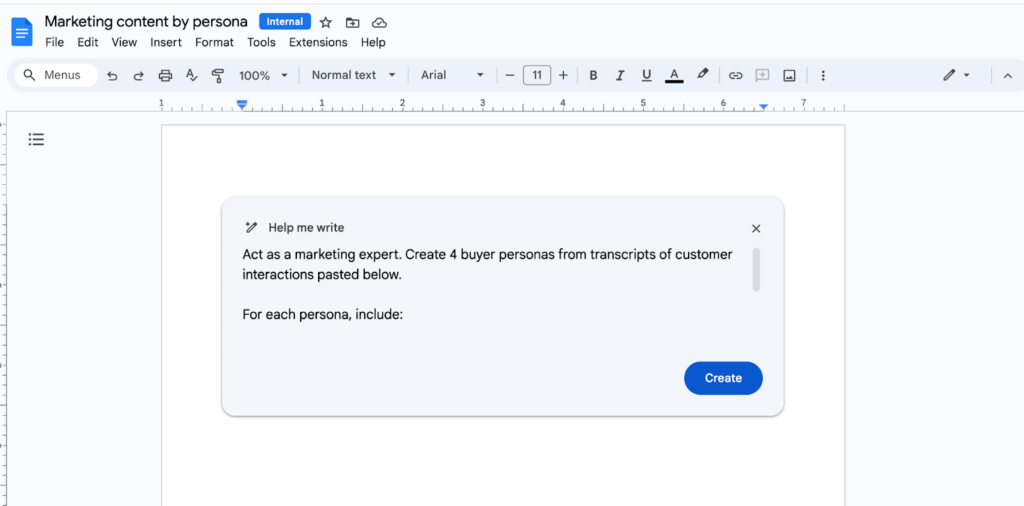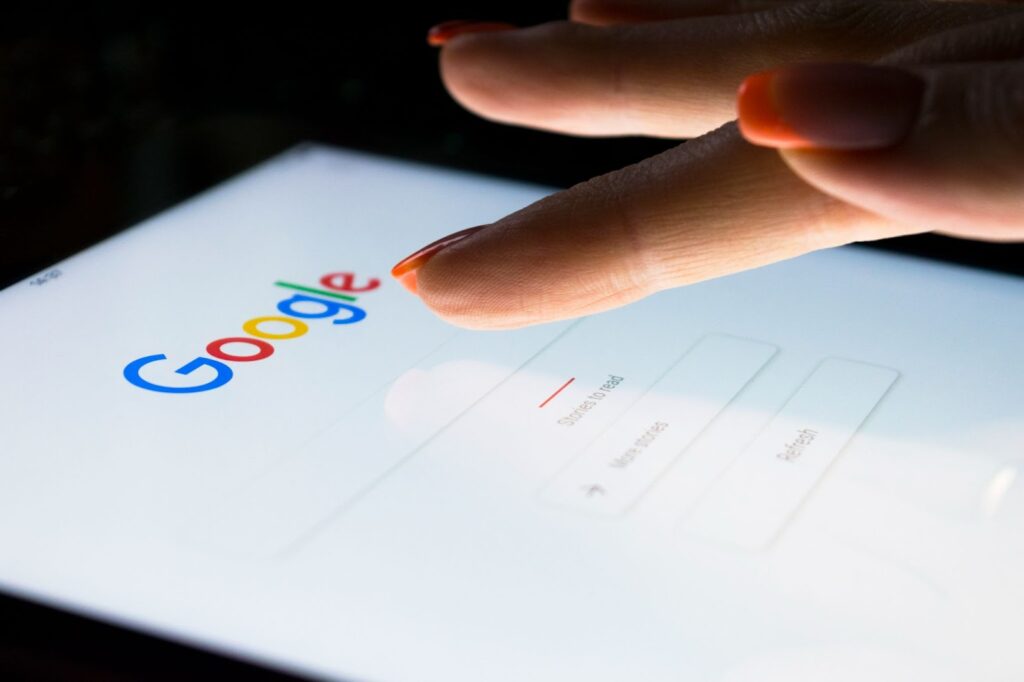With generative AI, wordsmiths and designers have discovered the power to generate volumes of words and images by submitting simple prompts. Unlike previous technological advances that transformed IT then trickled down to other departments, GenAI is hitting marketing first.
If you’re a CMO or in another leadership position in a marketing department, chances are your teams are already experimenting with these tools to generate social media posts, create video content, ideate ad copy, and more. Now is a good time to take stock of how to use generative AI for marketing, and how to prepare for what’s on the horizon with five things every CMO should understand about the early stages of content creation with GenAI tools.
1. Generative AI is completely transforming content creation
Marketing is the department of any organization where master communicators reside. Artificial intelligence, after making significant inroads into various domains that operate behind firewalls, is now making a big impact on marketing copy, script writing, image generation, ad copy, and personalized content of all kinds.
Here’s the good news. All the time you have dedicated to market research, understanding audience segments, and content generation puts you in a perfect position to take advantage of advances in generative AI. Human creativity is your superpower.
Recently, many of us at SADA have been experimenting with Duet AI, a generative AI tool that’s integrated into Google Workspace. The first way you’re likely to encounter Duet AI is with the Help Me Write feature in Google Docs. This powerful tool allows you to generate, refine, expand, bulletize, and summarize your copy, all within the context of an existing document.

These features are of course useful in generating content that’s meant for customers. But Duet AI isn’t just for Docs. You can use it in Sheets and Slides as well, which means you can start thinking of generative AI as a tool that isn’t just for accomplishing discrete tasks within one content framework, but as a new way to manage workflow across multiple tools. Generative AI is quickly becoming a must-have for Productivity & Collaboration strategies in many industries.
For instance, start thinking about transforming documents into presentations and spreadsheets into blog posts to establish a comprehensive content creation pipeline. These horizontal applications of generative AI within your organization’s day-to-day tasks are going to boost productivity within your organization as well as get your content in front of customers faster than before.
2. Establish a community of practice around generative AI tools
The marketing department at SADA is learning more about using generative AI tools every day, and no one person knows everything. GenAI represents a sea change in how we interact with computers in that it’s the first time computers have exhibited emergent behavior.
Previously, we understood that computers produced predictable results based on the data and instructions we input. Today, we can enter prompts that generate unexpected results. Not only that, two people can independently submit the same prompt and get radically different results. It takes a village to understand generative AI.
The implications of this shift in our relationship to technology is that we can’t depend as much as we have in the past on vertical, hierarchical structures of expertise. In a typical tech company, there will be someone who knows more than anyone else about coding with Python, say. They’re the authority, and if you have a Python-related question or problem, that person is your best bet to help you resolve your issue. Generative AI represents a new domain of expertise that requires a flatter, more collaborative approach.
Rather than operating as a coding language that can be mastered, generative AI is more like an environment to be explored. In that case, it’s wise to establish a community of practice that generously shares experiments, tips, and learnings, for example, rather than treating generative AI as a domain of expertise that can be assigned to one person on the team.

Cultivate the conditions that best disseminate knowledge about leveraging generative AI
At SADA, we have a biweekly marketing meeting where we share our latest prompts, product news, and thoughts in general on GenAI. SADA also conducts a weekly GenAI show-and-tell conducted by engineers that gets deeper into the weeds.
This week, for instance, we were treated to an illuminating demonstration on vector databases. Next week, who knows? We may find ourselves grappling with issues related to video generation, training data, natural language processing, deep learning models, or any host of topics related to AI generated content.
The speed at which GenAI is progressing combined with the unpredictability of outputs means that the more knowledge sharing and collaboration you can foster around generative AI, the better. Your leadership, then, becomes less dependent on domain expertise and more about cultivating the conditions that best disseminate knowledge and foster collaboration.
3. Think about how jobs will change with generative AI
Any sufficiently advanced technology tends to set off alarms as soon as it’s introduced, with those who have become comfortable with established ways of doing things feeling threatened that their jobs are in danger.
If you’re leading a marketing organization, no doubt you’ve caught whispers from copywriters and designers that generative AI could replace their jobs. The introduction of AI in marketing is rattling more than a few marketing organizations. It shouldn’t.

Generative AI hallucinations are job security for human beings
There are two reasons why. First, the unpredictability of outputs means that much more onus is being placed on verifying, editing, and revising content. Recently, we used generative AI tools to help craft a blog post and the output suggested that SADA won an award we had never actually won! If a human had made this error, it would have been an embarrassing blunder.
When using generative AI tools, this sort of mistake goes with the territory, and is called a “hallucination.” Hallucinations, to put it bluntly, are job security for the human beings who wrangle text, images, and design elements.
While the time to get to a first draft by using GenAI has been reduced, the time necessary to confirm the output has increased. Ethical concerns related to such things as data privacy, avoiding copyright infringement, and issues related to customer data more broadly also call for the soft skills that only humans (so far) can provide. While radically reducing the time necessary to conduct certain job functions, generative AI tools give us plenty to revise, oversee, and hone.
Iterating with generative AI
You can use the time you save generating a first draft by prompting even more first drafts and giving yourself more options to choose from. While previously the effort expended to generate copy meant toiling away on the initial draft, now the effort can be applied to becoming more discerning at the beginning and end of the process. Now you can allow yourself to get pickier, demand more nuance, or give yourself a wider range of possibilities.
Rather than working hard to make one piece of content great, we’re now in a position to iterate on such things as product descriptions and ad creative like never before. And when you take into account image generation, video generation, and the growing capabilities of large language models, the amount of content your business will soon be able to generate will be staggering. Whether or not this represents a drag or boost to productivity depends on your ability to leverage your team’s curatorial and editorial skills.
4. SEO and the Data Customer
SADA’s Creative Director recently started using a new term in meetings–Data Customer. Not to be confused with a human customer. When you work on content that exists on the Web, you want that content to be easily discoverable for search engines and that show up prominently in search results. That’s your Data Customer.
Say, for instance, that I want to write a series of blog articles about AI cloud security. To ensure that these articles appear prominently in search results for the people who’d find them useful, I’ll pay attention to the search terms people are using that are related to “AI cloud security.” Then I’ll write a blog post that includes these related terms in a manner that’s appropriate and unforced.
Search Engine Optimization is the practice of producing content that will rise to the top of Google Search results. When conducted poorly, SEO content sounds robotic. What we’re always looking for at SADA is the sweet spot where compelling and useful content also happens to be favored by our Data Customer, the algorithms that determine the order of search results.

Closing the gap between SEO and GenAI
Leveraging generative AI adds an entirely new dimension to the practice of SEO. We’re seeing a convergence of generative AI content and tools designed to analyze and help develop content that will show up prominently in search. Pay attention to this space, as new artificial intelligence solutions are emerging that will continue to close the gap between SEO and GenAI.
When you take a step back and consider where generative AI seems to be heading, it’s tempting to think you’ve stumbled into a science fiction movie. In a sense, we’ve reached a point where we can use machines to write content for machines to read. We’re all trying to wrap our heads around this new reality.
If you’re inclined to think about this in an even more unsettling way, you might say that we’ve come to a point when no one’s actually reading what no one’s actually writing. Which brings us to our final point.
5. Remember, generative AI is still all about communicating with people
Like the introduction of synthesizers into popular music in the 1980s, we run the risk of overdoing it with GenAI. Just because we can instantly generate a 50-item bulleted list of wonderful uses for a new widget doesn’t mean that we should.
Marketing is about communicating value and insight from one human consciousness to another. Ask yourself, when reviewing content that was created with help from GenAI, whether you would actually spend time perusing it.
Sometimes, revising GenAI content can feel a bit like showing up to a party where the only refreshments are celery sticks and rock-hard rye crackers. Sure, technically, they’re food, but they’re not exactly fun, are they?
AI-generated content, whether it’s images, blog articles, or even video requires at the very least a high-level overview to ensure you’re delivering the personalized experiences that lead to positive business outcomes like improved conversion rates. All of which is to say, we’re still dealing with humans communicating with humans.
Apply your discernment to every piece of GenAI content
Your department’s role as the company’s communications experts means you’re responsible for conveying the value of your products or services in the market in a way that’s honest, compelling, and engaging. This means that for the foreseeable future, you’ll be applying your taste and discernment to every piece of GenAI content that’s produced by your organization.

Your guidance is critical at this stage of generative AI development and innovation, and your skills have never been more necessary. When you embrace a valuable tool that’s at the forefront of innovation, you have an opportunity to set an example for your team. GenAI may just represent the biggest opportunity of your career.
Your ability to embrace the capabilities of AI-powered technology to transform the future of productivity ensures the future of your business, the ability of your market to grow, and the value you can provide to every customer. Are you ready to embrace the power of GenAI tools?
Explore generative AI with SADA

SADA’s team of AI experts is developing custom solutions for businesses of any size and in any industry that are eager to take advantage of powerful new generative AI solutions. Schedule a workshop today to discuss how your organization can develop a generative AI marketing strategy, with Duet AI, Bard, Vertex, and other innovations native to Google Cloud.



